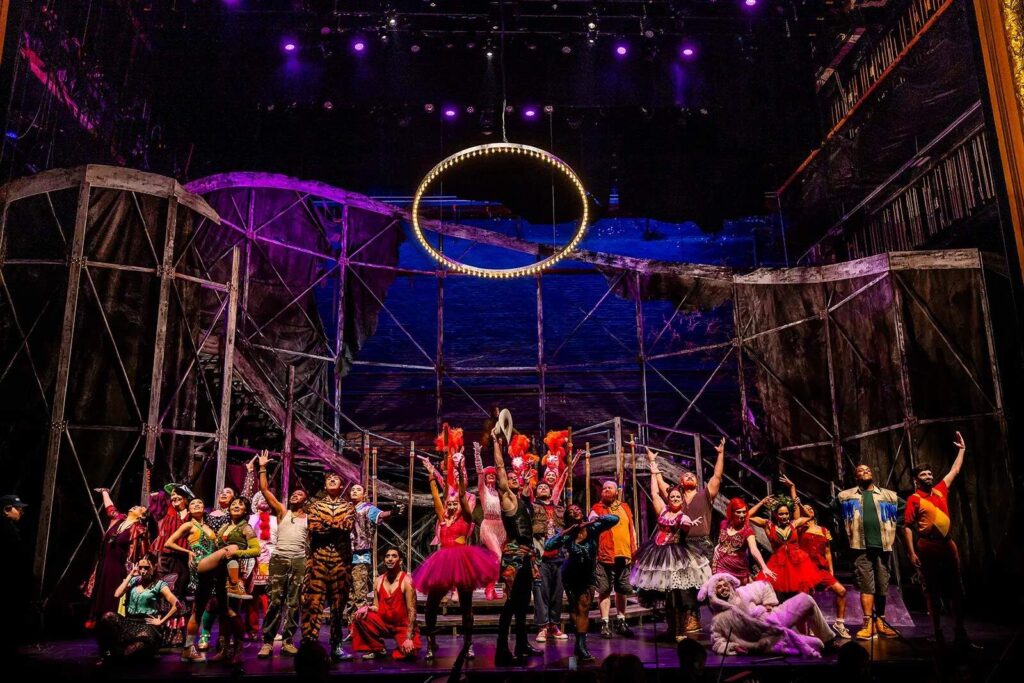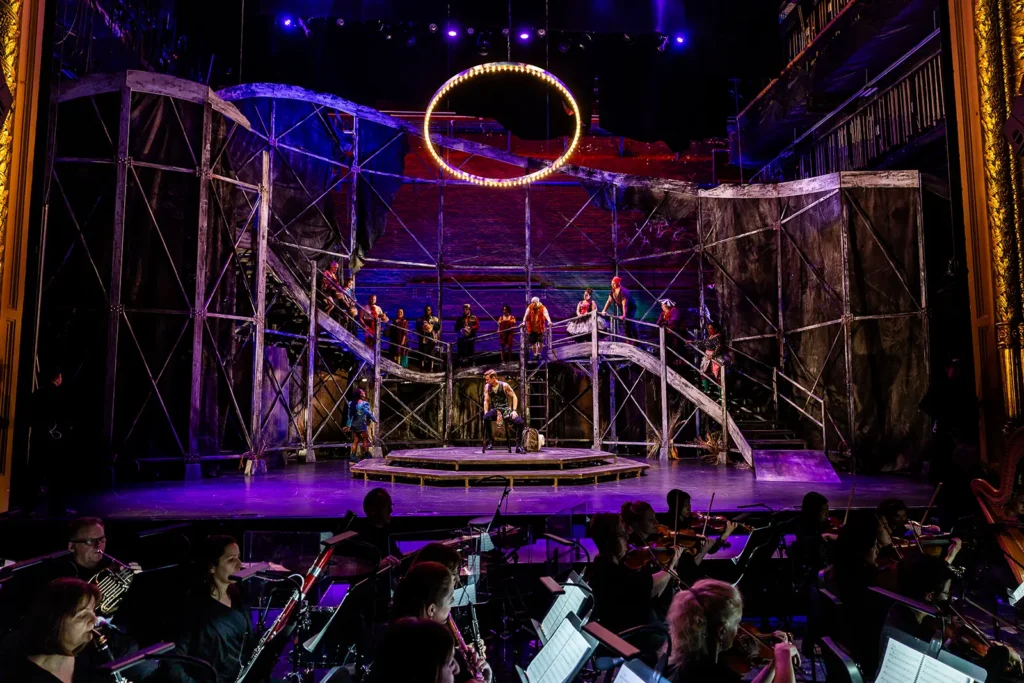
The cast of “Carousel.” Photo by Nile Scott Studios
Presented by Boston Lyric Opera
Music by Richard Rodgers
Book and Lyrics by Oscar Hammerstein II
Adapted from Ferenc Molnár ‘s 1909 play Liliom
Directed by Anne Bogart
Conducted by David Angus
Set design by Sara Brown
Costume design by Haydee Zelideth
Choreography by Shura Baryshnikov
Featuring: Brandie Sutton, Edward Nelson, Jamie Barton, Anya Matanovic, Omar Najmi, Markel Reed, Sarah Heltzel, Lee Pelton, Abigail Marie Curran
April 4th – 13th
Emerson Colonial Theatre
106 Boylston Street, Boston MA 02116
Tickets here
Content advisory: contains themes and images of domestic violence and emotional abuse.
Running Time: 3 hours with 1 intermission
Review by Maegan Bergeron-Clearwood
BOSTON — Rodgers’ and Hammerstein’s Carousel haunts the musical theatre canon. It is undeniably contentious, an exploration of domestic violence that is either unflinchingly raw or insurmountably problematic, depending on who you ask. It also has an undeniable legacy, containing an atmospheric whimsy, masterful score, and dramaturgical strangeness that bring audiences and artists back time and time again.
Perhaps nowhere is this allure more palpable than at Boston’s Emerson Colonial Theatre, where Carousel is returning to the stage for the first time since its premiere 80 years ago. This production, directed by Anne Bogart, is the antithesis of a nostalgic revival, despite staying faithful to the original libretto and score. Gone are the frilly dresses and seaside charm of the musical’s traditional setting; instead, we are delivered a high-concept framing device that aims to deconstruct the original story but ultimately muddles it.
We are told the doomed love story of Carousel by a ragtag band of travelers (indicated as such by the program note; this detail is not clear by the staging alone) who stumble upon the skeletal remains of an abandoned carnival, a visual allusion to the musical’s ghostly legacy. The set by Sara Brown is imposing, centering a roller-coaster that doubles as a towering staircase to the heavens. The stage is flanked by two modern-looking police officers guarding a giant metal gate that separates the carnival from the audience; their presence is never sufficiently explained, and I found their presence unsettling and unjustified.
In the first act, the audience cannot forget that this is a play-within-a-play: actors watch each other’s scenes and bow to the audience after songs; a member of the troupe reads along with a copy of the script; chorus members pull fishing bibs and petticoats over their distinctly modern clothing.
This framing device is bold but uneven as most of the metatheatrical elements are dropped after intermission. It does not do the musical any justice. Carousel is a flawed but sincere redemption story about a flawed but sincere human being, so a degree of realism is required for the audience to take such enormous leaps of faith.
Unfortunately, this production is decontextualized, lacking any sense of time, place, or character, which renders its many bombastic visual choices hollow and lets the scenes of violence go frustratingly uninterrogated. The piece, as a whole, feels artificial and far-away. It is at times dismissive of the source material’s vulnerability.
This lack of specificity also makes it difficult to follow the plot, especially for anyone previously unfamiliar with the musical (such as my plus-one). Character relationships, gender norms, and time shifts are made fuzzy due to ambiguous production choices. The costumes by Haydee Zelideth are particularly unhelpful: the storytellers’ 21st century wardrobes are bubbly but incohesive, at times distracting. It is difficult, for example, to stay in the moment during a scene about domestic violence when one of the ensemble members is wearing tiger print, onesie pajamas.

Photo by Nile Scott Studios.
In contrast, conductor David Angus gives the score a lavish but largely traditional treatment, playing to the musical’s delicate strengths. The performers have breathtaking musical talent, but their interpretations of the characters are broad, sometimes leaning towards caricature.
Anya Matanovic has a standout performance as a bubbly, charismatic Carrie, but she neglects the character’s more vulnerable side; similarly, Edward Nelson’s hyper-masculine Billie fails to capture any of the depth that makes the flawed protagonist so memorable. He is also the hardest vocalist to understand. I found myself relying on live captions for his songs the most.
Brandie Sutton as Julie Jordan is the exception to this rule, bringing a sense of groundedness that the production sorely needs. She captures Julie’s sensitivity and inner strength, giving agency to a character who is sometimes interpreted as a hapless victim. Her vocals are also some of the most resplendent in the cast, with a rendition of If I Loved You that is simultaneously rooted in tradition and utterly her own.
If Carousel haunts the musical theatre canon, then revivals need to justify its resurrection. Although Bogart’s staging is a feast for the senses, the production makes a poor case for bringing the musical back to life.

Leave a Reply
You must be logged in to post a comment.